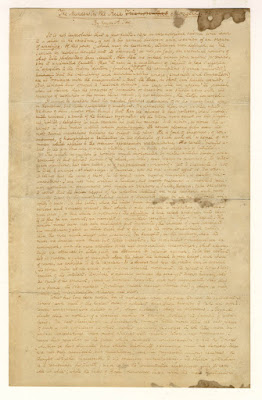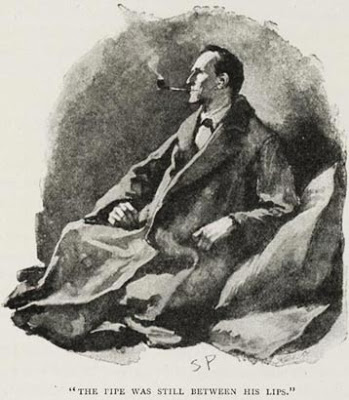This post was first published on November 6, 2015, adapted from a piece the author wrote for the Las Vegas Weekly in 2009.We re-post it again this week in honor of our Edgar Allan Poe Reading Group, which will meet over the next three Saturdays in July. Each session focuses on a different set of stories and takes place at a different location with important ties to Poe’s literary legacy. Come for one session or all three!
“Edgar Allan Poe, who, in his carelessly prodigal fashion, threw out the seeds from which so many of our present forms of literature have sprung, was the father of the detective tale, and covered its limits so completely that I fail to see how his followers can find any fresh ground which they can confidently call their own…. On this narrow path the writer must walk, and he sees the footmarks of Poe always in front of him.”– Arthur Conan Doyle
In 1841, Poe became literary editor for Graham’s Magazine in Philadelphia and in the first issue published his own short story, “The Murders in the Rue Morgue.” In a later letter, Poe called this tale something “in a new key.” It featured an extraordinarily intelligent “detective” (although not referred to as such in the story), C. Auguste Dupin, who, with his faithful but obtuse friend, solves a seemingly insoluble crime. Two women have been brutally murdered, one stuffed up a chimney and one nearly beheaded, then thrown from a window. The door and windows of the murder room were locked from the inside. Dupin carefully combs the crime scene and, using a faculty Poe terms “ratiocination,” discovers how the murders were committed and whodunnit.

With this one tale, Poe invented the most popular modern genre of literature: the mystery detective story. Poe would write two more Dupin tales, “The Mystery of Marie Roget” and “The Purloined
Letter.” All mysteries since have followed the formula Poe set forth in his Dupin tales: a baffling crime; a detective who uses deductive reasoning to read clues and discover a solution;
an observant but less astute companion who, as narrator, also stands in for the reader; an inept police force. However the most important element of Poe’s tales of ratiocination is the way they focus not on the crime or the solution, but on the very steps the detective takes to unravel the tangled skein. The reader is engaged not by the crime, but by the detailed description of the puzzle as it is put together.
Doyle admittedly borrowed Poe’s formula wholesale when he created Sherlock Holmes. You can find many instances in the Holmes tales that echo Dupin, but Doyle goes one step further and even has the great sleuth of Baker Street ironically criticize his forbearer:
“Sherlock rose and lit his pipe. ‘No doubt you think you are complimenting me in comparing me to Dupin, he observed ‘Now in my opinion, Dupin was a very inferior fellow. That trick of his of breaking in on his friends’ thoughts with an apropos remark after a quarter of an hour’s silence is really very showy and superficial. He had some analytical genius, no doubt; but he was by no means such a phenomenon as Poe appeared to imagine.'” (“A Study in Scarlet”)

Unlike the jealous Holmes, Doyle would later claim, “If every man who receives a cheque for a story which owes its springs to Poe were to pay a tithe to a monument for the master, he would have a pyramid as big as that of Cheops.” Although many mystery writers trace their direct influence back to Doyle’s Holmes, who is by far the most recognized fictional detective ever created, it is Poe’s Dupin who engendered Sherlock. Doyle may have written the words to his tales, but the ink he used was pure Poe.
